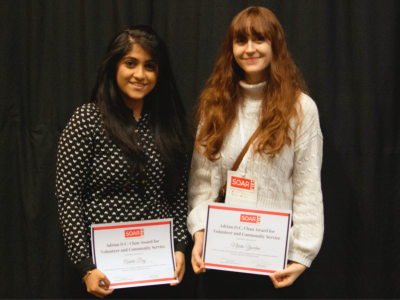By Rozita Rashtchi, PhD Student Systems & Computer Engineering
 Many grad students will eventually present the findings of their research in a research paper or thesis. For those of you in scientific and engineering disciplines, it is common to have tables, figures, photographs, charts, graphs, line drawings, maps, and other illustrative materials in your thesis which we refer to as figures and tables. Figures and tables enhance your thesis by providing a visual representation of your data, but formatting them requires patience and attention to detail. In this article, I provide some general guidelines to help you present this visual data correctly. Keep in mind that format may differ slightly different based on your discipline, so always double check with your supervisor.
Many grad students will eventually present the findings of their research in a research paper or thesis. For those of you in scientific and engineering disciplines, it is common to have tables, figures, photographs, charts, graphs, line drawings, maps, and other illustrative materials in your thesis which we refer to as figures and tables. Figures and tables enhance your thesis by providing a visual representation of your data, but formatting them requires patience and attention to detail. In this article, I provide some general guidelines to help you present this visual data correctly. Keep in mind that format may differ slightly different based on your discipline, so always double check with your supervisor.
It is important that all figures and tables are organized and easy for the reader to find. Here are some tips:
- All figures and tables should be first referred to in the text and then appear as close as possible to their first mention, generally after the paragraph where they are cited or on the following page.
- All figures and tables should appear in the order of their numbers as well as their first mention in the text.
- Use colours in figures and tables to enhance details, but for being distinguishable in black-and-white print, make sure to use markers or different line styles as well.
- All figures and tables should stay within the page margins.
- Figures and tables, if necessary, may appear in landscape mode. Make sure that the top of them are at the binding edge and also the captions are in landscape mode too.
- All photos need a scale. All axes need a label with units. All rows and columns of a table need a title.
- All figures and tables should be legible. Make sure that all figures have a good resolution. If needed, copy clearly with source. Don’t hesitate to redraw poor reproduction of figures. (If you use someone else data, refer to it as “data from ref. X”).
- When mentioning a figure or table with a number in the text, use capitalized words like “as seen in Figure 3.”, but when mentioning in phrases, use ordinary style like “comparing to the previous figure”.
- It is preferred to refer to figures or tables in a phrase, like “Power decreases with the distance as shown in Figure 3.”, not like “Power decreases with the distance (Figure 3.)”.
Captions
Every figure and table should have a caption. Here are some tips on using captions:
- A figure caption is centered under the figure; a table caption is centered above the table (if a caption is more than one line, make it left justified).
- A Figure and its caption should appear on the same page.
- All captions should start with a capitalized word and end with a period. They can be sentence case or title case, but be consistent throughout the thesis.
- If a figure or table spans more than one page, the first page has the complete caption while the subsequent pages have a caption like “Figure 3. Continued.”.
- Captions should say something enough about the figure or table which can be understood without referring to the main text.
Numbering
- Figure and table numbers end with a period or colon like “Figure 3.” Or “Figure 3:”.
- Figures and tables are numbered consecutively throughout the thesis but independent from each other.
- Figure and table numbers can be in sequential order like “Figure 3.” or in chapter order like “Figure 1.3.”, but consistent throughout the thesis.
Applying the above guidelines will enhance the quality of your thesis. Note that readers will pay most attention to the tables and figures in your thesis and thus the most important information should be found in your figures and tables.
Other articles in this series can be found in our Grad Student Blog section.
Thursday, August 14, 2014 in Grad Student blogs, News
Share: Twitter, Facebook




